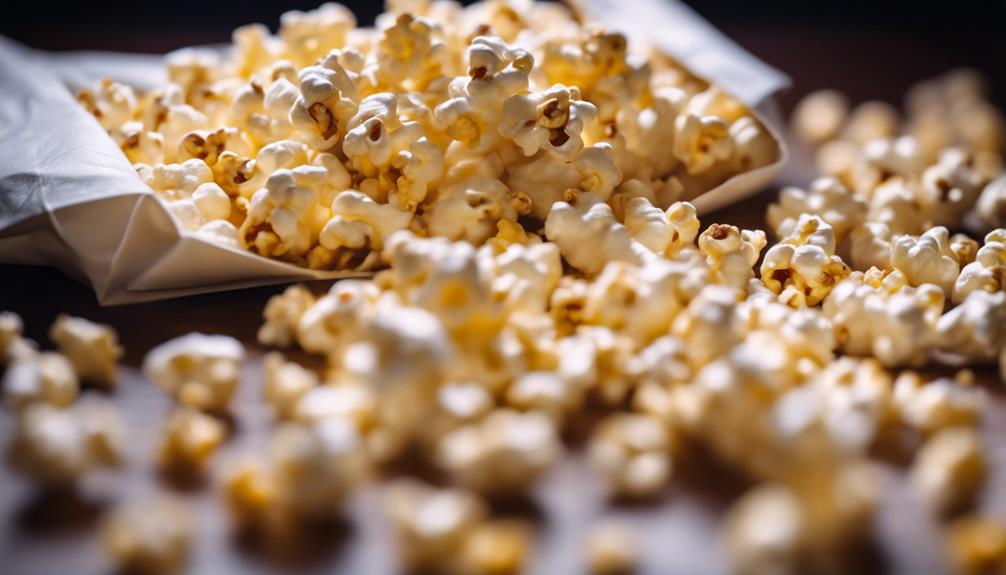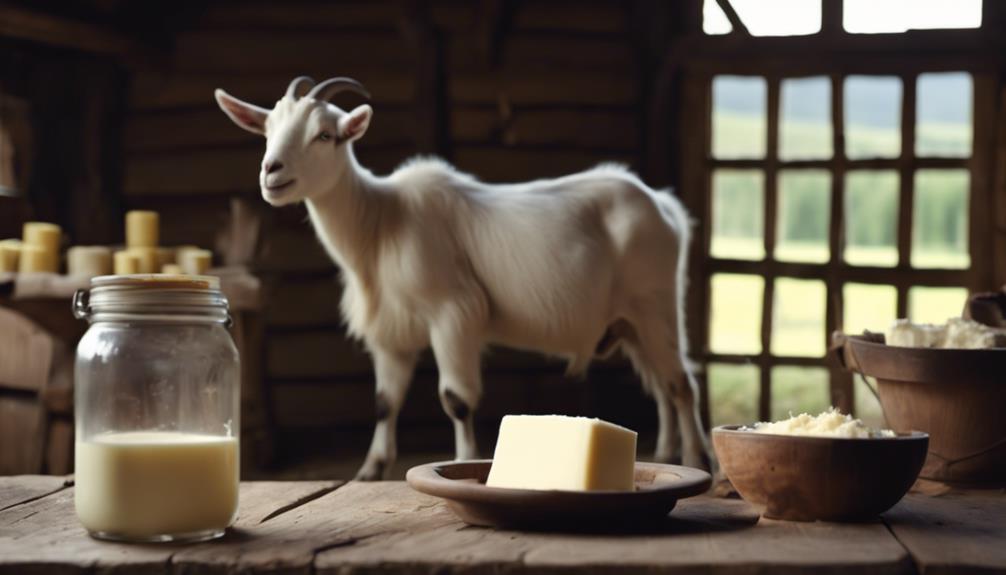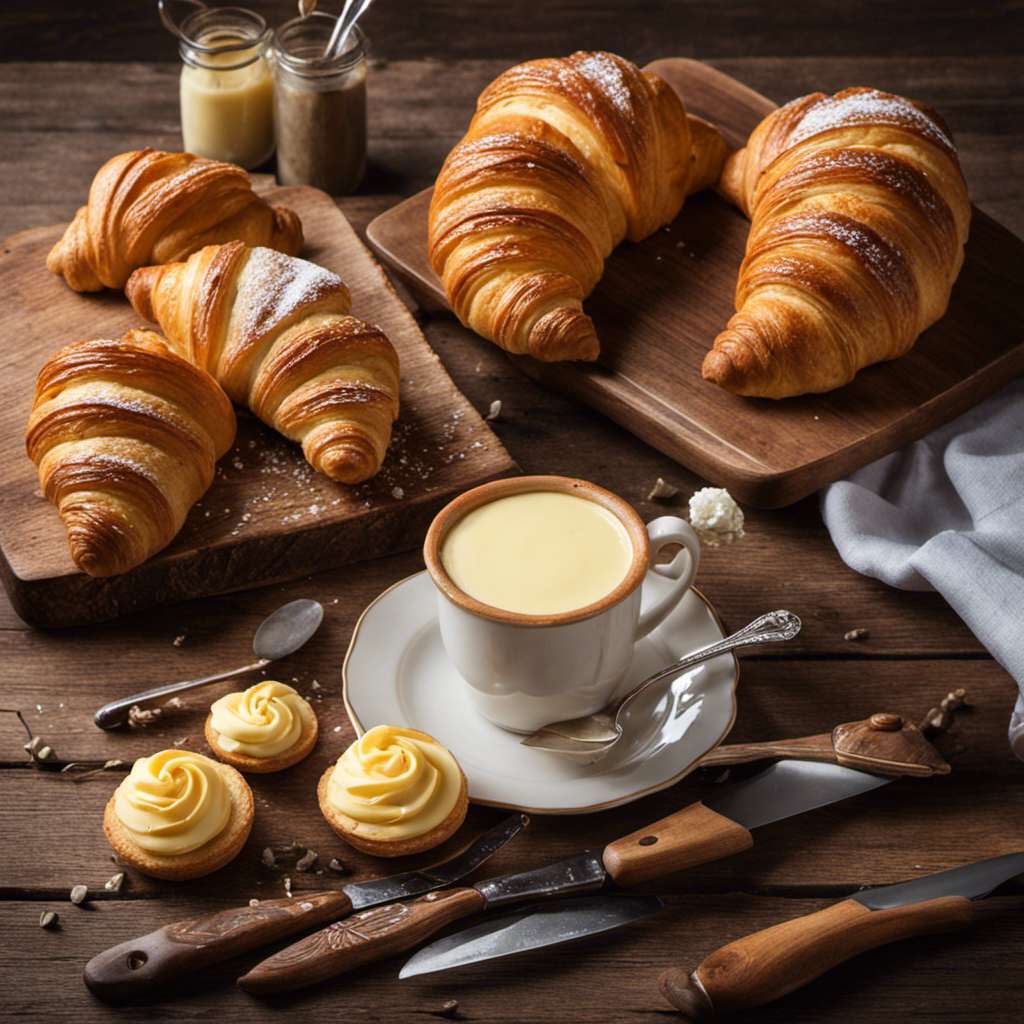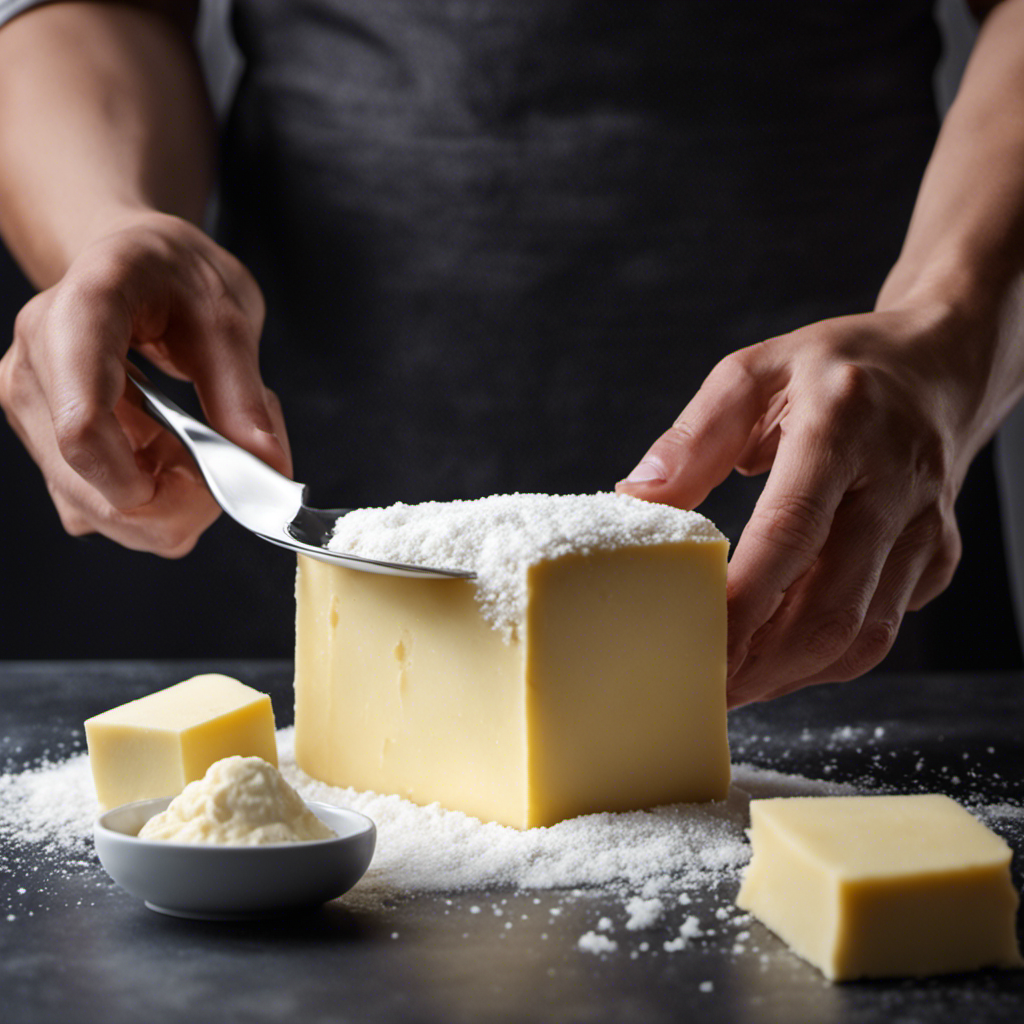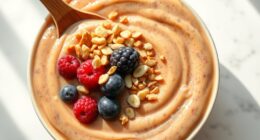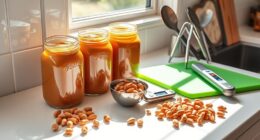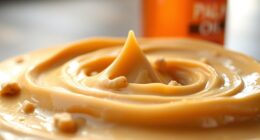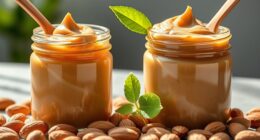For the ultimate buttery microwave popcorn, go with Orville Redenbacher's. This brand offers a rich, smooth butter flavor appreciated by many popcorn lovers. It strikes the perfect balance of butter and salt, making it a fan favorite. Unlike other brands that fail in the butter department, Orville Redenbacher's consistently delivers. While Pop Secret has an overwhelming saltiness and artificial aftertaste, and Act II falls short on flavor, Orville Redenbacher's stands out. You'll discover why it's the top pick if you explore further.
Key Takeaways
- Orville Redenbacher's is renowned for its rich, buttery taste, making it a top choice for butter lovers.
- Jolly Time popcorn offers a butter flavor reminiscent of movie theater popcorn.
- Act II lacks a rich, savory butter flavor, often resulting in a bland snack.
- Pop Secret's butter flavor is overshadowed by intense saltiness and artificial taste.
- Newman's Own and 365 Organic lack the rich buttery flavor butter enthusiasts seek.
The Taste Test Process
To determine the most buttery microwave popcorn, we conducted a thorough taste test comparing popular brands. We focused on Orville Redenbacher's, Act II, Pop Secret, and Jolly Time to evaluate which one delivers the most intense buttery flavor. Each brand was carefully prepared according to package instructions to guarantee a fair comparison.
During the taste test, we assessed several key factors. Appearance was the first criteria; we looked at how well the butter coating was distributed on the popcorn.
Next, we moved on to taste, where we evaluated the richness and authenticity of the buttery flavor. Texture played a significant role too, as we considered how the buttery coating affected the popcorn's crispness.
Finally, we rated overall satisfaction, which encapsulated the entire buttery experience from the first bite to the last kernel.
After gathering feedback from our tasters, we reached a consensus on which brand truly stood out in delivering the ultimate buttery taste experience. The tasters' preferences and feedback were essential in determining the winner, ensuring that the brand with the most butter flavor was chosen based on detailed and unbiased analysis.
Skinny Pop Review
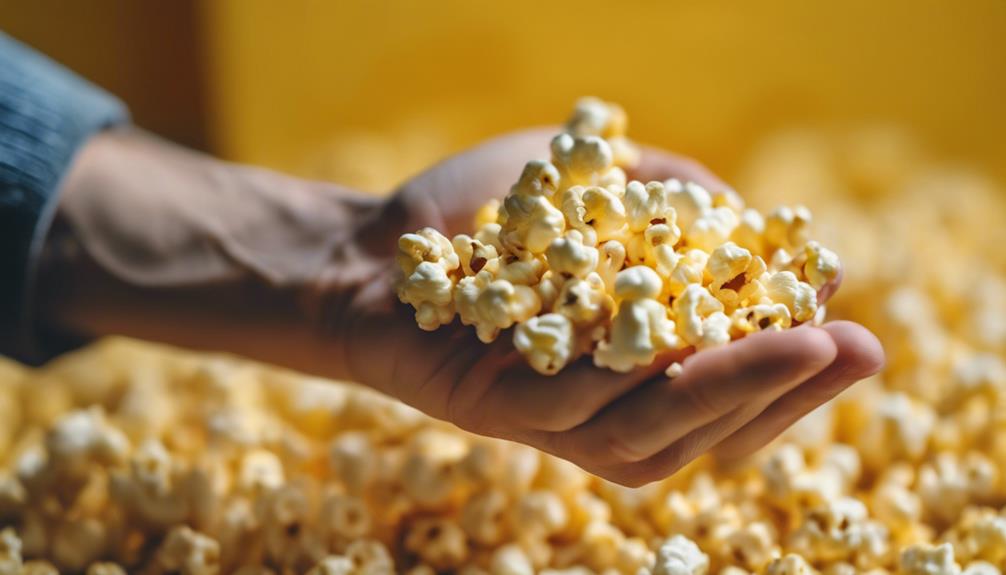
Many popcorn enthusiasts are curious about whether Skinny Pop can deliver a satisfying buttery experience despite its healthier ingredients. On the surface, Skinny Pop microwave popcorn seems promising with its combination of sunflower oil, palm oil, and natural nondairy butter flavor. However, the reality is quite different.
When you pop a bag of Skinny Pop, you'll immediately notice its pale appearance, which doesn't instill much confidence in its butter flavor. Taste testers quickly found themselves disappointed. Instead of the rich, buttery taste you'd expect, Skinny Pop offers a strange flavor reminiscent of vanilla yogurt. This unique combination of natural flavors may appeal to some, but for most, it just doesn't hit the mark.
The texture of Skinny Pop also leaves much to be desired. It's not just about the taste; the mouthfeel is equally important for a satisfying popcorn experience. Unfortunately, Skinny Pop fell short on both counts.
Despite its promise of healthier ingredients, it couldn't deliver a satisfying buttery experience. So, if you're looking for that classic, rich butter flavor in your microwave popcorn, Skinny Pop mightn't be your best bet.
Act II Review
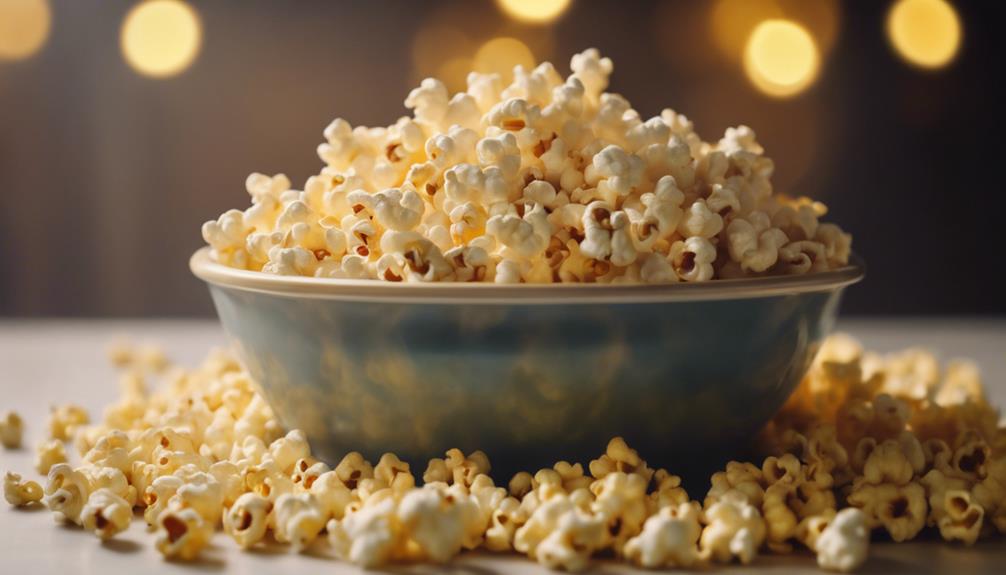
When you try Act II, you might notice that the butteriness doesn't quite meet expectations.
Some users report issues with kernels not popping fully.
Compared to other brands, Act II's flavor can sometimes fall short in richness and consistency.
Lack of Butteriness
Despite its promise of buttery goodness, Act II microwave popcorn disappointingly lacks the rich, savory flavor that butter lovers crave. When you tear open a bag, you expect a burst of butter and seasoning, but Act II falls short. Instead, you're met with dry, bland, and unseasoned kernels that leave much to be desired.
Tasters unanimously ranked Act II at the bottom for a reason. The popcorn:
- Lacks a distinct buttery flavor: The butter taste is barely noticeable.
- Has a dry texture: The kernels feel almost parched rather than lush and buttery.
- Features artificial flavor: The fake butter flavor doesn't hold up against real butter.
- Is under-seasoned: The lack of salt and seasoning makes for a bland snack.
This popcorn fails to deliver the satisfying buttery experience you're looking for. If you're a butter lover, you'll find Act II's offering particularly disappointing. The kernels don't have the rich, salty taste that makes popcorn a beloved treat.
Instead, you're left with a subpar snack that doesn't live up to its buttery promises, making Act II microwave popcorn an unappealing choice for those seeking flavor and indulgence.
Popping Issues
Act II microwave popcorn often frustrates consumers with its uneven popping and frequent unpopped kernels. You might've experienced putting a bag in the microwave, only to find a substantial portion of the kernels stubbornly remaining unpopped. This inconsistency in popping not only leaves you with less popcorn to enjoy but also affects the overall eating experience.
One of the main popping issues with Act II is its inability to pop evenly. You'll notice that some kernels pop almost instantly while others lag behind, leading to a frustrating mix of perfectly popped kernels and half-popped duds. This can be particularly annoying if you're planning to share the popcorn with friends or family, as no one wants to end up with a mouthful of unpopped kernels.
Consumers have consistently reported these popping issues, which have contributed to Act II's poor rankings in taste tests. The popping issues aren't just a minor inconvenience; they detract significantly from the enjoyment of your popcorn. When you're looking for a reliable, buttery snack, these popping problems make Act II a less appealing option. Keep these issues in mind if you're considering which brand to choose for your next movie night.
Flavor Comparison
Even beyond its popping issues, Act II microwave popcorn falls short in delivering the rich, buttery flavor that many popcorn enthusiasts crave. Despite being known for its classic butter lovers flavor profile, Act II often leaves fans wanting more. When you compare it to other brands, like Orville Redenbacher's, the difference is quite noticeable. Consumers frequently report that Act II lacks the intense buttery taste they hope for in every bite.
In flavor comparisons, several key points highlight why Act II mightn't be your top choice:
- Subtle Butter Flavor: Many reviews suggest that Act II's buttery taste is too mild, not providing the burst of flavor butter lovers seek.
- Overall Experience: Disappointment surrounds the flavor and overall experience of Act II popcorn, as it doesn't meet expectations for richness.
- Consumer Feedback: Consistently, feedback indicates that Orville Redenbacher's offers a much more satisfying buttery taste.
- Flavor Intensity: If you're searching for microwave popcorn with the most buttery taste, Act II mightn't deliver the level of intensity you desire.
For a truly indulgent buttery experience, you might find Orville Redenbacher's to be a superior choice, ensuring each kernel bursts with flavor.
Pop Secret Review
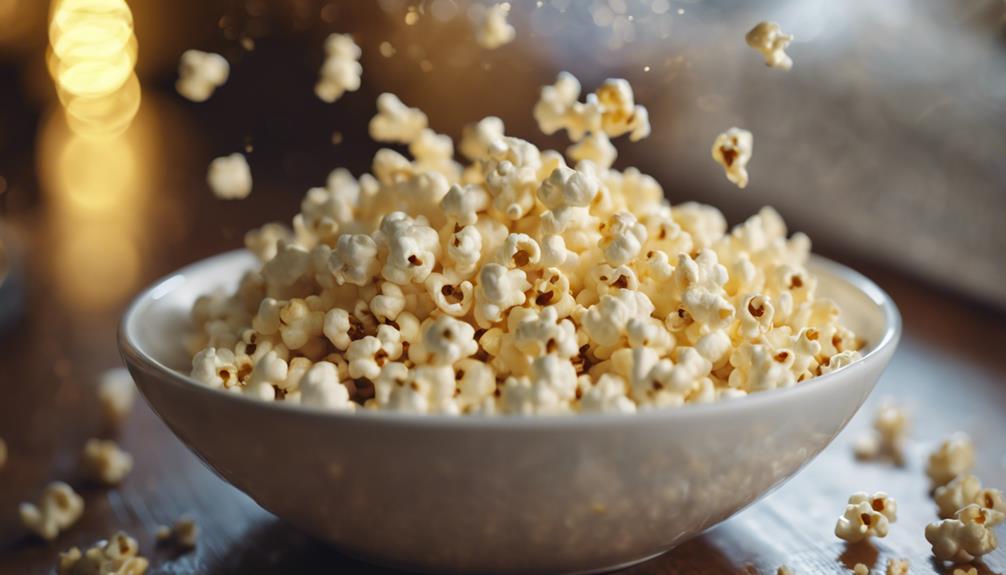
When you try Pop Secret, you'll immediately notice its intense saltiness, which some might find overwhelming.
Despite a few tasters appreciating this bold flavor, many couldn't get past the artificial taste and strange aftertaste.
Excessive Salt Content
Many reviewers criticize Pop Secret microwave popcorn for its overwhelming saltiness, which leaves a strong need for water. When you pop a bag, you might find yourself reaching for a glass of water almost immediately. The excessive salt content is a major drawback that many popcorn enthusiasts have noted. It can overshadow the buttery flavor you might be expecting, making the entire snacking experience less enjoyable.
Popcorn should be a delightful treat, but with Pop Secret, the salt tends to dominate. This raises several concerns:
- Taste Balance: The saltiness is so intense that it overpowers any buttery notes.
- Health Concerns: High salt levels can be problematic for those watching their sodium intake.
- Hydration Needs: You'll likely feel the need to drink more water to counteract the salt.
- Overall Enjoyment: The excessive salt content can detract from the popcorn's overall appeal.
Even though Pop Secret is a popular brand, its excessive salt content has earned it quite a bit of negative feedback. So, if you're someone who prefers a balanced flavor profile in your popcorn, you might want to explore other options.
Artificial Flavor Issues
Aside from the overwhelming saltiness, Pop Secret microwave popcorn also suffers from an artificial flavor that leaves a strange aftertaste. When you bite into a handful of Pop Secret, you might notice a coating that tastes anything but natural. This artificial flavor is a significant drawback, making the popcorn less enjoyable for many consumers.
In taste tests, Pop Secret consistently ranked last, largely due to this artificial flavor issue. The strange aftertaste is hard to ignore and often leaves you reaching for a drink to wash it down. It's not just a minor flaw; it's a deal-breaker for those who value a natural, buttery popcorn experience.
Many tasters found themselves disappointed with Pop Secret, not just because of the overwhelming saltiness, but because the artificial flavor was so pronounced. You might expect a buttery, rich taste, but instead, you get a synthetic coating that detracts from the overall experience.
This issue, coupled with a higher price point, makes Pop Secret a less appealing option for popcorn lovers. If you're looking for a more natural-tasting, buttery treat, you might want to steer clear of Pop Secret.
Mixed Taster Opinions
Opinions on Pop Secret microwave popcorn are all over the place, with some tasters liking the intense saltiness and others finding it too overwhelming. You might find the same divide if you try it yourself. While some people appreciate the bold flavor, others can't get past the artificial taste that lingers after each bite.
Many tasters noted that:
- Pop Secret has an artificial flavor that's hard to ignore.
- The saltiness can be overpowering, making it a less enjoyable snack.
- Despite the strong butter flavor, it doesn't taste like natural butter.
- The high price point doesn't match the quality, leaving many disappointed.
Pop Secret landed in last place in the overall taste test. The consensus was clear: the intense saltiness and artificial flavor didn't win many fans. If you're someone who enjoys a strong, salty snack, you might find Pop Secret appealing. However, if you prefer a more natural butter flavor, you might want to look elsewhere.
The strange aftertaste was a dealbreaker for many, making it hard to justify the cost. In the end, Pop Secret didn't meet the high expectations set by its price.
Orville Redenbacher's Review
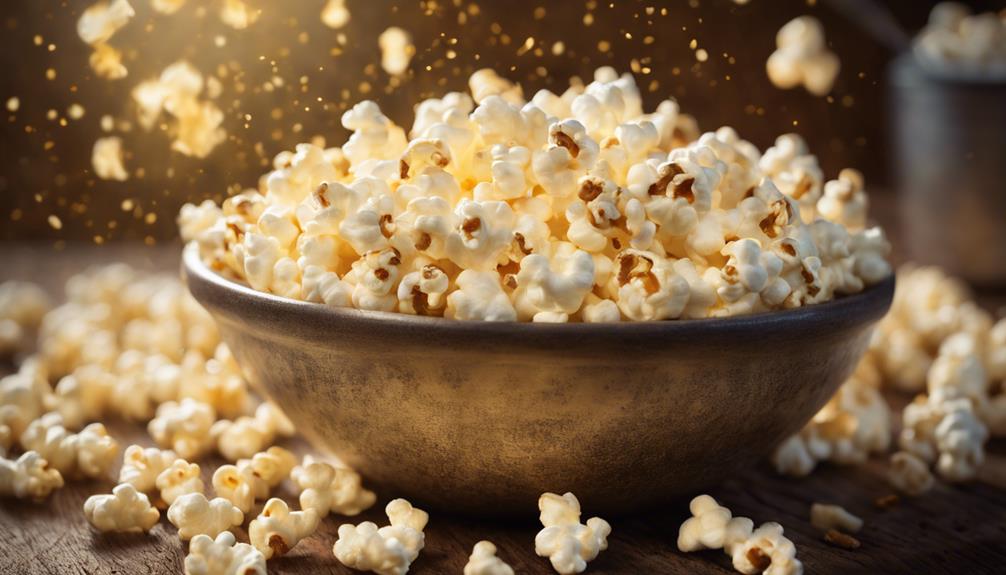
Orville Redenbacher's microwave popcorn stands out for its smooth butter flavor and ideal saltiness. If you're a fan of a rich, buttery taste, this brand won't disappoint. Orville Redenbacher's has perfected the art of creating a popcorn experience that's both flavorful and satisfying. Each kernel pops to a bright yellow hue, ensuring that the butter flavor is evenly distributed throughout, leaving no kernel behind.
You'll find that Orville Redenbacher's offers various flavor options, but their classic butter lovers popcorn remains a fan favorite. It's praised by many for its consistent quality and rich, buttery goodness. The smooth butter flavor doesn't overwhelm but complements the perfect amount of saltiness, making it a go-to choice for many popcorn enthusiasts.
What makes Orville Redenbacher's even more appealing is its availability. You can easily find it at major retailers like Amazon and Walmart, making it convenient to satisfy your buttery popcorn cravings anytime.
If you haven't tried Orville Redenbacher's yet, you're missing out on one of the best buttery popcorn experiences available. Give it a try, and you'll see why it's a top contender for the most butter flavor in microwave popcorn.
365 Organic Review

If you're in the market for an organic option, 365 Organic microwave popcorn offers a different experience from the buttery richness of Orville Redenbacher's. This popcorn is renowned for its organic ingredients, making it a preferred choice for health-conscious snackers. However, when it comes to the buttery flavor, it falls short.
Tasters noted that 365 Organic has a unique corny taste, which can be appealing if you enjoy the natural flavor of popcorn. Unfortunately, it lacks the rich, buttery essence that many popcorn lovers desire. The texture, however, is crisp, making it a decent base for adding your own toppings.
Key points to keep in mind:
- Organic ingredients: Ideal for health-conscious individuals.
- Distinct corny taste: Highlights the natural flavor of popcorn.
- Crisp texture: Suitable for adding personal toppings.
- Lack of buttery flavor: May not satisfy those seeking a rich, buttery experience.
While 365 Organic microwave popcorn has its merits, the overall feedback underscores dryness and a lack of buttery flavor. If you're specifically looking for that buttery richness, this may not be your top choice. However, for an organic option with a clean, corny taste, it's worth a try.
Final Rankings
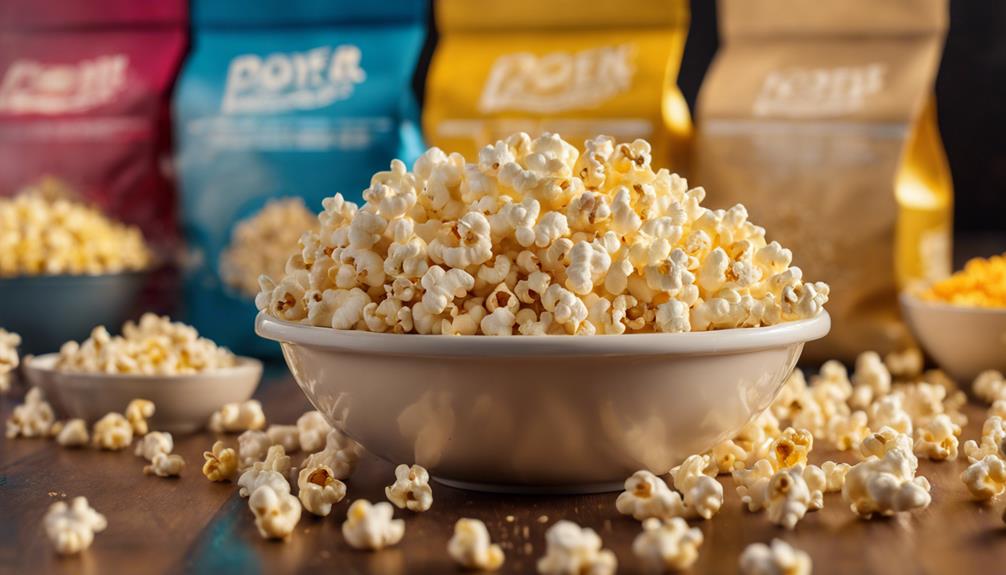
When it comes to the ultimate buttery microwave popcorn experience, here's how our top picks stack up. Orville Redenbacher's takes the crown, offering a smooth butter flavor and just the right amount of saltiness. It's the ideal choice for butter lovers who crave that perfect balance.
Jolly Time comes in a close second with a taste that closely mimics the buttery goodness of movie theater popcorn. If you're longing for that cinema feel, Jolly Time won't disappoint. It's rich and flavorful, making it a strong contender for the top spot.
Act II finds itself in the middle of the pack. Its taste and texture are average—not exceptional but not disappointing either. It's a reliable option if you're not too picky but still want a decent buttery snack.
Newman's Own ranks fourth due to its relatively bland flavor. You'll likely need to add extra seasoning to get the taste you're after, which can be a bit of a hassle.
Lastly, Pop Secret lands at the bottom. Despite its high price point, it fails to deliver with its artificial flavor, leaving butter enthusiasts feeling let down.
Frequently Asked Questions
How Do You Get the Most Butter on Microwave Popcorn?
To get the most butter on microwave popcorn, choose a 'butter lovers' or 'butter explosion' variety. Read the ingredients for real butter or butter flavorings. You can also add melted butter after popping for extra richness.
What Is the Difference Between Orville Redenbacher Movie Theater Popcorn and Ultimate Butter?
Orville Redenbacher Movie Theater Popcorn has real butter, delivering a classic theater taste. Ultimate Butter popcorn uses a palm oil and natural flavor blend for an intense butter experience. Both are easily accessible at major retailers.
What Is the Best Tasting Butter for Popcorn?
You'll find Orville Redenbacher's has the best tasting butter for popcorn. It's renowned for its rich, authentic butter flavor. Jolly Time also offers a movie theater-like taste, but it doesn't quite surpass Orville Redenbacher's.
What Is the Most Buttery Jolly Time Popcorn?
If you're looking for the most buttery Jolly Time popcorn, go for the Blast O Butter Minis. They're packed with rich, theatre-style butter flavor, offering a deliciously indulgent experience without needing extra seasonings. Enjoy the buttery goodness!
Conclusion
After tasting, testing, and savoring, the buttery winner is clear. Skinny Pop is light on butter, Act II delivers moderate flavor, Pop Secret satisfies, Orville Redenbacher's indulges, and 365 Organic keeps it natural.
But, if you're craving the richest, most buttery experience, Orville Redenbacher's is your go-to choice. It's creamy, it's flavorful, it's irresistible. So, pop it, munch it, love it—because buttery bliss awaits in every bite of Orville Redenbacher's.
